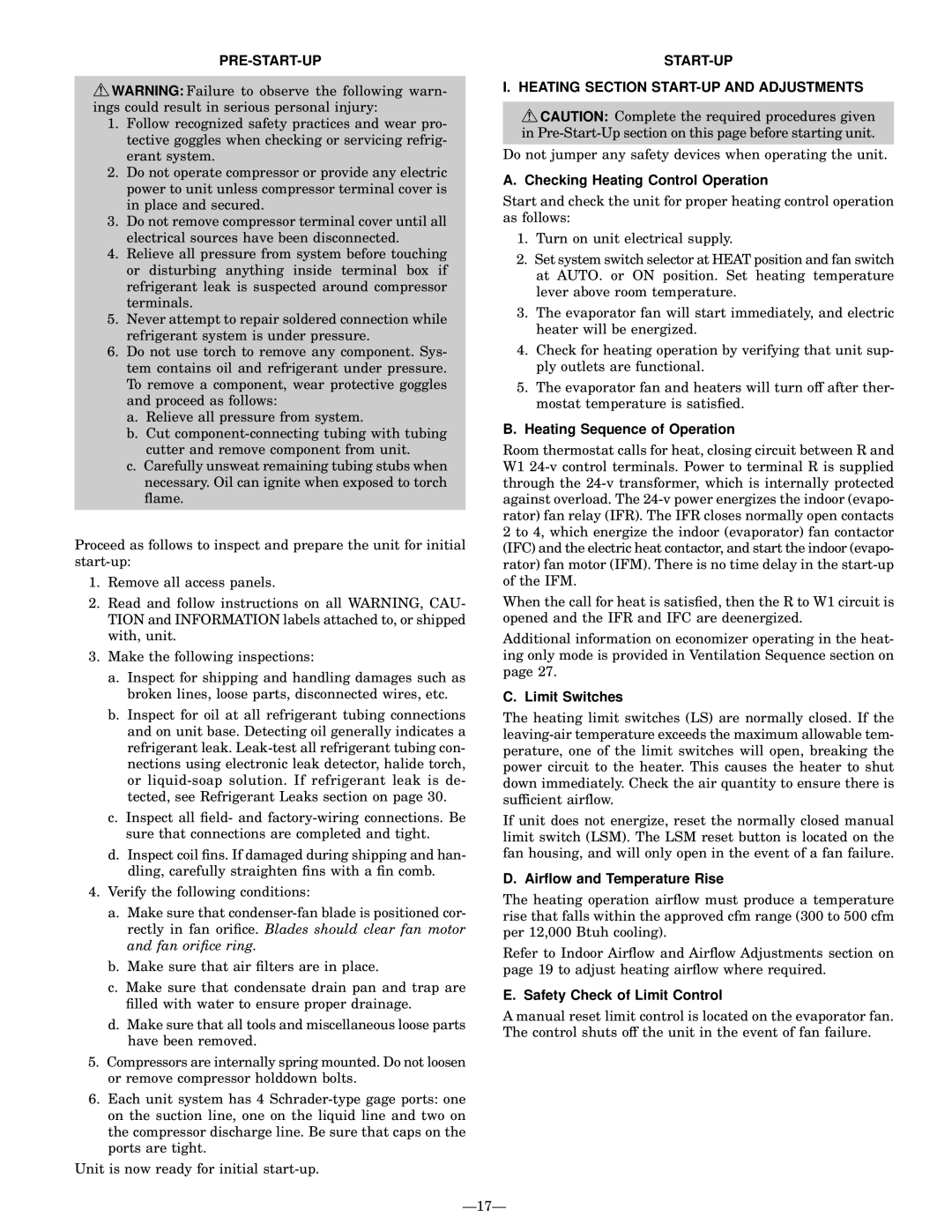558D specifications
The Bryant 558D represents a leading-edge model in the realm of advanced heating, ventilation, and air conditioning (HVAC) systems. Designed for both residential and light commercial applications, this unit brings together efficiency, performance, and reliability, making it a go-to choice for homeowners and contractors alike.One of the standout features of the Bryant 558D is its high-efficiency rating. With SEER (Seasonal Energy Efficiency Ratio) ratings that can reach up to 18, it allows homeowners to enjoy significant savings on electricity bills while maintaining a comfortable indoor environment. The system is powered by advanced compressors that ensure optimal performance across various climate conditions, providing consistent cooling and heating as needed.
In terms of technology, the Bryant 558D incorporates a two-stage cooling system, which allows for better temperature control and humidity management. This technology enhances comfort by preventing the system from frequently starting and stopping, thus reducing wear and tear while extending the unit's lifespan. The variable-speed blower motor further contributes to this efficiency by adjusting its speed to meet the precise needs of the space, ensuring optimal air distribution and comfort.
Durability is another hallmark of the Bryant 558D. The unit is built with high-quality materials, including a galvanized steel cabinet coated with a sleek, weather-resistant finish that protects against rust and environmental wear. Its compact design makes installation seamless, allowing it to fit into various spaces without significant modifications.
The Bryant 558D also features smart technology compatibility, allowing users to integrate it with modern home automation systems. This connectivity provides homeowners with remote control capabilities, enabling them to regulate their home’s temperature via smartphone applications. This not only adds to convenience but also supports energy management strategies, as users can adjust settings based on occupancy and lifestyle patterns.
Finally, noise levels have been an important consideration in the design of the Bryant 558D. With innovative sound-dampening features, the unit operates quietly, making it an ideal choice for residential areas where noise sensitivity is paramount.
Overall, the Bryant 558D stands out as a sophisticated solution for heating and cooling needs, combining energy efficiency, advanced technology, durability, and user-friendly features. It is an excellent investment for those looking to enhance their home comfort while also being mindful of energy consumption.

